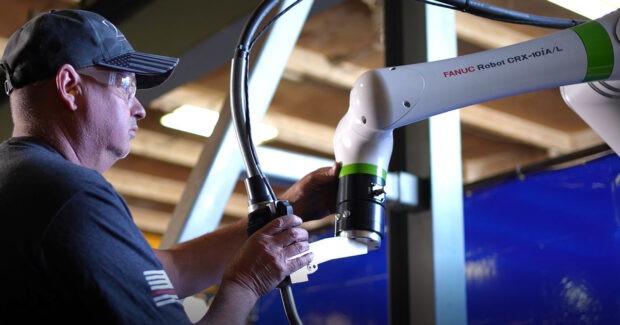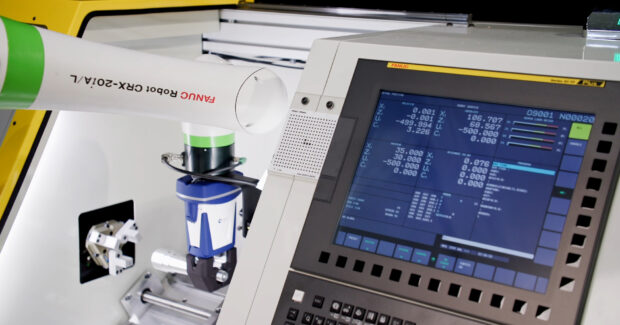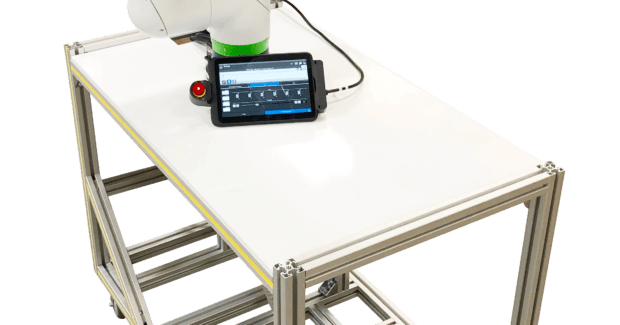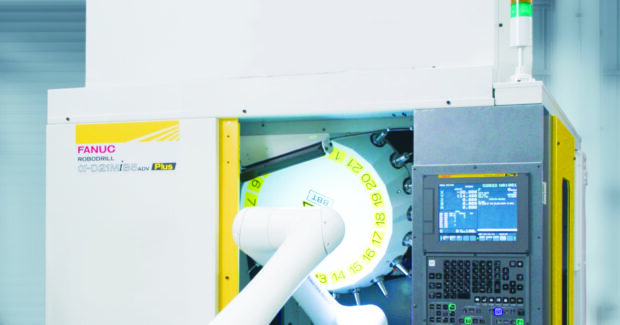Prepare for the Future with Robotics/Automation
Ten questions to ask when considering a machine tending cobot.
Posted: September 29, 2023

For the second year in a row, North American robot sales have set record highs. According to the Association for Advancing Automation (A3), companies ordered 44,196 robots in 2022, an 11% increase from the previous year. As many different industries are seeing the benefits of adding automation to their operations, smaller machine shops have been reluctant to make an initial investment in robotics — until cobots.
With the growing availability and affordability of flexible collaborative robotics, more operations are becoming interested in this type of automation, especially for high-mix, low-volume applications. However, adding automation for the first time can be an intimidating task to begin. Asking the following 10 questions can help companies evaluate whether a cobot could be the right solution.
No. 1 What are your pain points?
Consider first your business challenges. Is it labor? Inaccurate forecasting and quoting? Not having enough throughput? Then think about the machine tending application you’d like to automate and how it would help overcome some of those challenges. For example, would automating loading and unloading of parts free up more people for other tasks? If so, cobots could be the answer to your automation efforts.
No. 2 Is your workspace appropriate for a cobot?

Answering this question could determine whether adding a cobot will be a straightforward process. For example, cobots work best in very structured and predictable workspaces, so consider whether parts will be able to be picked up exactly in the same spot or not by the cobot. Evaluate if the area is free of clutter and obstacles, which is crucial to easily deploying cobots, and consider secondary processes that may be required.
No. 3 Do you have small footprint restrictions?
If you are working in a smaller space, cobots can be an excellent candidate for these types of environments. Depending on the application, larger industrial robots need for fencing make them impractical for smaller shops with very limited floor space. Cobots can usually operate alongside skilled workers in a shared workspace, but a proper risk assessment must always be conducted.
No. 4 Are you experiencing labor shortages?
We’ve all heard that millions of manufacturing jobs could go unfilled by the next decade due to the skilled labor gap. Training and retraining can become expensive, so planning to reduce your need to recruit, hire, train and retain workers for the long haul might be the safest bet to ensure your growth plans stay on track.
No. 5 Do you need more capacity, but don’t have the staff (or the budget)?
Going after new business can be difficult if manufacturers aren’t confident their operations can execute the orders. Cobots can help ensure large orders are met and even help catch up on work to get in front of big jobs. Plus, cobots can help fill contingency plans for workers unexpectedly missing time or on leave.
No. 6 How much do you need to lift?

The amount of weight the arm can lift, including the weight of the gripper as well as total part weight before machining, is the “payload.” This is important to calculate so that the cycle time of total machining can be determined. The more the payload, the slower the arm might need to move, affecting the overall production throughput time. However, more cobots are now available with higher payloads, such as FANUC’s CR line, which is able to handle up to 50 kg. The CRX line can lift as much as 30 kg.
No. 7 How far do you need to reach?Understanding how far a cobot’s arm needs to extend will dictate the proximity of the cobot to the CNC machine. Also, understanding how the cobot will be loading or unloading a part into a machine, as discussed in No. 2 and No. 3, will help determine the axes of motion required. The more complicated this is, the more dexterous the cobot will need to be. However, reach capabilities of cobots are expanding, such as FANUC’s CRX-25iA collaborative robot, which has an 1,889 mm reach.
No. 8 What type of parts need to be gripped?
Using varying grippers for different applications is possible, but time consuming to change out. Consider choosing a gripper that can adapt to pick up different sizes, shapes and types of materials. Rectangular or cylindrical prismatic parts that have two parallel sides are perfect for a pincer-style gripper, while vacuum suction cups are suited for thin or flat items.
No. 9 Can your workers program robots?
One factor that commonly deters shops from adding automation is the lack of robotics programming expertise. However, cobots are addressing this skills gap issue by allowing robot interaction via a drag-and-drop interface. This way, operators “teach” the arm by physically moving it through each step. This allows the operator to quickly re-teach the cobot when introducing a new part to the program.
Also, if you have well-versed G-code programmers in your shop, consider adding a control feature like FANUC’s QSSR G-code to help. This allows the robotic motion to be controlled in machine G-code through the FANUC CNC.
No. 10 How will your robot connect to your CNC machines?
For a robot to communicate with a CNC machine, seamless integration between the controls and the robot is necessary. But making sure all functions are performed in a single application can be challenging. FANUC addresses this need with our QSSR Connect feature, where the robot motion is programmed using a teach pendant. This enables the use of intelligent features like vision and FANUC’s CNC iHMI interface to provide step-by-step robotic programming guidance.
Assessing Your Results
If answering the above questions have shown that a cobot could make your operations more profitable and efficient, then consider cobots, such as CRXs. However, if that’s not the case, there are other automation options. FANUC America has a robot finder tool that helps find the right robot for the application. If you’re looking for a more standardized solution, perhaps a pre-engineered robotic work cell would be best to automate your process.
Subscribe to learn the latest in manufacturing.


















